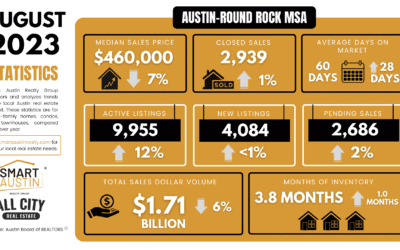A 1031 exchange, also known as a “like-kind exchange” or “tax-deferred exchange,” is a real estate transaction in which a property owner can defer paying capital gains taxes on the sale of a property by exchanging it for another investment property. The Internal Revenue Service (IRS) allows this type of transaction through Section 1031 of the tax code, which was created to promote investment in real estate.
The Financial Benefits of a 1031 Exchange
The primary benefit of a 1031 exchange is the deferral of capital gains taxes. Capital gains taxes are typically owed when a property is sold for a profit. However, by doing a 1031 exchange, the property owner can defer paying these taxes until later. This can result in significant savings, as the deferred taxes can compound over time, potentially increasing the overall value of the investment.
In addition to tax deferral, a 1031 exchange can help property owners diversify their portfolios, acquire more suitable properties, and move into different markets. By exchanging one property for another, property owners can improve their overall financial position and better position themselves for long-term success.
The Process of a 1031 Exchange
A 1031 exchange involves several steps, including identifying and acquiring the replacement property and properly structuring the transaction to comply with IRS rules.
- Identifying the Replacement Property
The first step in a 1031 exchange is to identify the replacement property. This property must be used for investment or business purposes. Property owners have 45 days from the sale of their original property to identify potential replacement properties and must do so in writing to the intermediaries involved in the exchange.
- Acquiring the Replacement Property
Once the replacement property has been identified, the owner must acquire it. Our team at Smart Austin Realty Group are experts in searching for homes for sale in Austin that meet specific criteria. It’s crucial to ensure that the replacement property meets all the requirements set forth by the IRS for a 1031 exchange.
- Working with a Qualified Intermediary
A qualified intermediary is a third-party facilitator who handles the sale of the original property and the purchase of the replacement property. The intermediary is responsible for holding the proceeds from the sale of the original property and ensuring that the transaction complies with IRS rules. Working with a reputable and experienced intermediary is important to ensure a smooth and successful 1031 exchange.
- Complying with IRS Rules
To comply with IRS rules, the 1031 exchange must be structured correctly, and all required documentation must be in place. This includes documentation of the identification of the replacement property, the agreement between the property owner and the intermediary, and the closing documents for the sale of the original property and the purchase of the replacement property.
- Closing the Transaction
The final step in a 1031 exchange is closing the transaction. This involves the transfer of ownership of the original property to the buyer and the transfer of ownership of the replacement property to the property owner. The property owner has completed the 1031 exchange and can defer paying capital gains taxes on selling the original property.
In conclusion, a 1031 exchange is a valuable tool for real estate investors looking to defer paying capital gains taxes on selling a property. By properly structuring the transaction and complying with IRS rules, property owners can potentially save a significant amount of money and better position themselves for long-term success. If you’re considering a 1031 exchange, working with a qualified intermediary and consulting with a tax professional is essential to ensure a successful transaction.
It’s important to remember that there are limitations and restrictions to 1031 exchanges, and strict timelines must be met to defer paying capital gains taxes successfully. For this reason, starting the process as soon as possible after selling the original property is crucial.
At Smart Austin Realty Group, we have a team of experts who can help guide you through the 1031 exchange process. We have the knowledge, experience, and resources to ensure that your transaction is structured correctly and complies with IRS rules. Contact us today to learn more about how we can help you take advantage of the benefits of a 1031 exchange. We aim to help you achieve your investment goals while minimizing tax liability.




